Last-mile delivery refers to the final step of the delivery process where goods are transported from a transportation hub to the end customer. In the context of the food delivery sector, this stage is critical as it directly impacts customer satisfaction and retention.
The efficiency and speed of last-mile delivery can determine the freshness and quality of the food upon arrival, which are essential factors for customer satisfaction in food services.
The evolution of last-mile delivery has accelerated significantly in recent years, particularly in response to the COVID-19 pandemic. Prior to the pandemic, traditional delivery models were already facing pressure to evolve due to the rise of e-commerce and changing consumer expectations.
The pandemic, however, brought about a seismic shift in consumer behavior, with a dramatic increase in demand for home deliveries as people sought to minimize physical interactions and adhere to lockdown measures.
This surge in demand forced businesses to innovate rapidly. Companies expanded their delivery networks, integrated advanced technologies such as real-time tracking and automated delivery systems, and adopted new delivery models to keep up with the heightened demand. The necessity for contactless delivery options also became paramount, driving the adoption of drones and autonomous vehicles for safe and efficient delivery.
The purpose of this article is to delve into the latest innovations revolutionizing last-mile delivery in the food sector. By examining technologies and strategies such as autonomous vehicles, drone deliveries, sustainable practices, and crowdsourced delivery models, this article aims to provide an in-depth understanding of how these innovations are enhancing efficiency, reducing costs, and improving customer satisfaction.
Through this exploration, we will highlight the transformative potential of these innovations and their implications for the future of food delivery.
The Rise of Real-Time Tracking Technology
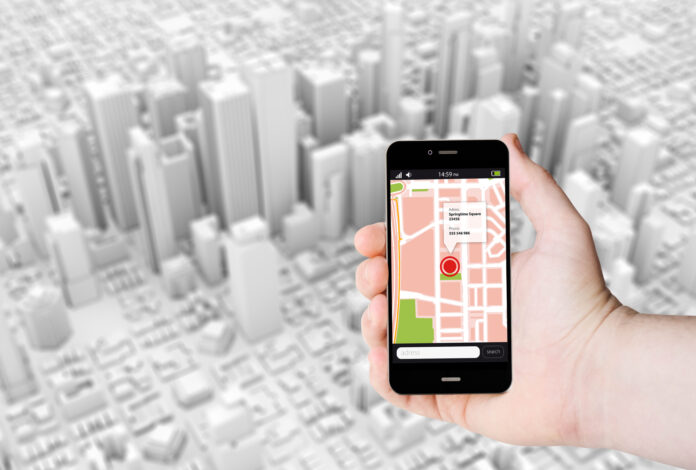
Importance of Real-Time Tracking for Customer Satisfaction
Real-time tracking technology has become a cornerstone of modern last-mile delivery services, particularly in the food delivery sector. This technology provides customers with the ability to monitor the progress of their orders from the moment they are placed until they reach their doorstep. This transparency significantly enhances customer satisfaction by providing several key benefits:
- Visibility and transparency ─ Customers can see the exact location of their delivery in real time, reducing anxiety about when their order will arrive. This level of visibility helps build trust and confidence in the delivery process.
- Improved communication ─ Real-time tracking allows for timely updates and notifications about the status of the delivery, including any potential delays. This proactive communication keeps customers informed and engaged.
- Enhanced convenience ─ With real-time updates, customers can better plan their schedules around the delivery, minimizing the time they need to wait. This convenience is particularly important for food deliveries, where timing is critical to ensure freshness and quality.
Several companies have successfully integrated real-time tracking technology into their last-mile delivery operations, setting new standards for the industry.
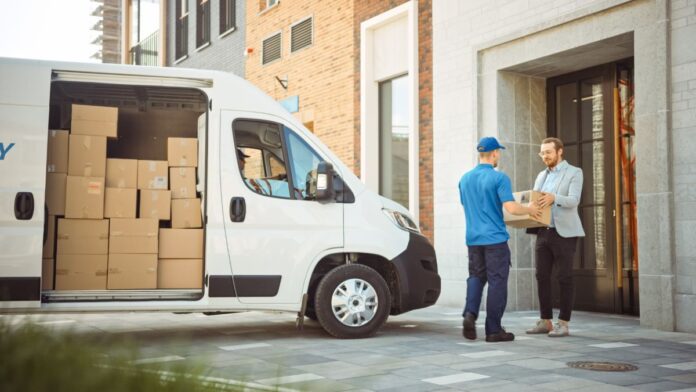
- Uber Eats ─ Uber Eats uses a robust real-time tracking system that allows customers to follow their orders from preparation to delivery. The platform provides live updates on the estimated time of arrival, the location of the delivery driver, and any changes in the delivery route. This transparency helps maintain high levels of customer satisfaction and trust.
- Domino’s Pizza ─ Domino’s Pizza has been a pioneer in implementing real-time tracking with its “Domino’s Tracker.” This tool provides customers with real-time updates on the status of their pizza order, from preparation to delivery. The transparency and engagement provided by the tracker have been instrumental in enhancing the customer experience and differentiating Domino’s in the competitive food delivery market.
- Postmates ─ Postmates, now part of Uber, leverages real-time tracking technology to ensure efficient and transparent deliveries. The Postmates app allows customers to track their delivery in real-time, providing updates on the location of the courier and the estimated delivery time. This feature not only improves customer satisfaction but also helps optimize delivery routes and reduce operational costs.
- Amazon Flex ─ Although primarily known for package delivery, Amazon Flex’s use of real-time tracking technology offers valuable lessons for the food delivery sector. Amazon Flex drivers use an app that provides real-time updates to customers, allowing them to track their delivery with precision. The app also uses sophisticated algorithms to optimize delivery routes, ensuring timely and efficient deliveries.
These examples illustrate how real-time tracking technology can transform last-mile delivery operations by enhancing transparency, improving communication, and increasing overall efficiency. As customer expectations continue to rise, the adoption of such technologies will be crucial for businesses such as DeliveryDart aiming to stay competitive in the food delivery market.
Sustainable Delivery Practices
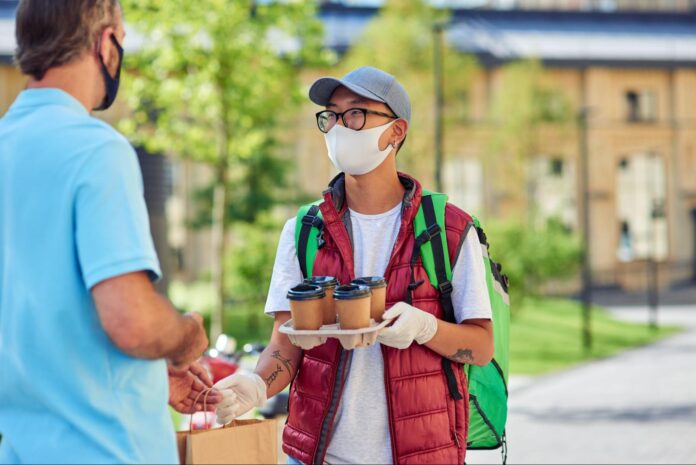
As environmental concerns become more pressing, the logistics and delivery sectors are under increasing pressure to adopt sustainable practices. Green logistics aims to minimize the environmental impact of delivery operations through various innovative approaches:
- Electric vehicles (EVs) ─ Electric delivery vans and trucks are being deployed to reduce carbon emissions. EVs offer a cleaner alternative to traditional fossil fuel-powered vehicles, significantly lowering greenhouse gas emissions and contributing to improved air quality in urban areas.
- Cargo bikes ─ For short-distance deliveries, particularly in dense urban environments, cargo bikes present a highly efficient and eco-friendly solution. These bikes are not only emission-free but also help reduce traffic congestion and delivery times. They are particularly effective for last-mile deliveries where agility and speed are crucial.
- Eco-friendly packaging ─ Reducing the environmental footprint of packaging materials is another critical aspect of green logistics. Companies are increasingly using biodegradable, recyclable, and reusable packaging to minimize waste. This approach not only helps in reducing environmental impact but also meets the growing consumer demand for sustainable products.
Consumer Demand for Sustainable Practices
Consumer awareness and concern about environmental issues have risen sharply in recent years. More customers are demanding that businesses adopt sustainable practices, including in their delivery operations. This shift in consumer preferences has prompted many companies to take significant steps toward sustainability:
- Customer preferences ─ Studies have shown that a significant portion of consumers prefer to purchase from brands that demonstrate a commitment to environmental responsibility. This trend is particularly strong among younger demographics, who are more likely to prioritize sustainability in their purchasing decisions.
- Corporate response ─ In response to this demand, companies are investing in green technologies and practices. This includes the adoption of electric delivery vehicles, optimization of delivery routes to reduce fuel consumption, and implementation of carbon offset programs. Additionally, many companies are highlighting their sustainability efforts in their marketing to attract environmentally conscious consumers.
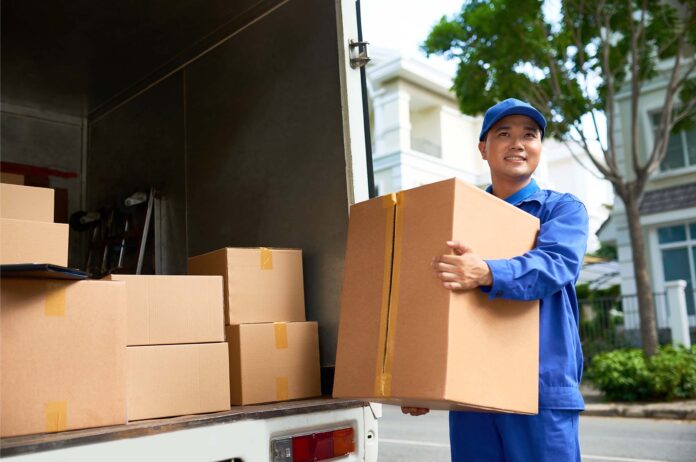
Examples of Brands Leading the Way in Sustainable Last-Mile Delivery
Several brands are at the forefront of implementing sustainable practices in their last-mile delivery operations:
- UPS ─ UPS has been a leader in adopting green logistics. The company has a large fleet of electric and hybrid delivery vehicles and has invested in alternative fuel research. UPS also uses advanced route optimization technology to reduce fuel consumption and emissions.
- DHL ─ DHL Express is another pioneer in sustainable delivery. The company aims to achieve zero emissions by 2050 and has been actively deploying electric vehicles and cargo bikes in various cities around the world. DHL’s GoGreen program also focuses on reducing the environmental impact of its operations through carbon offsetting and other initiatives.
- IKEA ─ IKEA has committed to achieving 100% zero-emission home deliveries by 2025. The furniture giant is transitioning to electric vehicles for its last-mile deliveries and is also exploring the use of sustainable packaging materials to reduce waste.
- Amazon ─ Amazon has made significant strides towards sustainability with its “Shipment Zero” initiative, which aims to make 50% of its shipments carbon neutral by 2030. The company is investing in electric delivery vehicles and optimizing delivery routes to reduce emissions. Amazon is also focusing on reducing packaging waste through innovative solutions like Frustration-Free Packaging.
These examples demonstrate that sustainable delivery practices are not only feasible but also beneficial for businesses and the environment. As consumer demand for eco-friendly options continues to grow, companies that prioritize sustainability will likely gain a competitive edge in the market.
The Future of Last-Mile Delivery
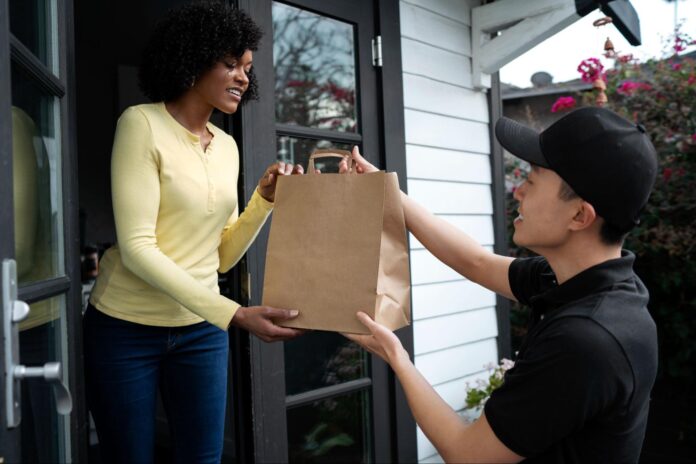
Emerging Trends and Future Innovations in Last-Mile Delivery
As the logistics and delivery sectors continue to evolve, several emerging trends and innovations are set to shape the future of last-mile delivery. These advancements are driven by the need for greater efficiency, sustainability, and customer satisfaction. Key trends include:
- Hyper-local fulfillment centers ─ To reduce delivery times and costs, companies are establishing smaller, decentralized fulfillment centers closer to customers. These micro-fulfillment centers allow for quicker delivery and lower transportation costs, especially in urban areas.
- Advanced robotics and automation ─ The use of robots for tasks such as sorting, packing, and even delivery is increasing. Automated warehouses and delivery robots can significantly reduce labor costs and increase operational efficiency.
- Drone deliveries ─ While still in the early stages, drone deliveries are becoming more common. Drones offer a fast, cost-effective, and environmentally friendly solution for last-mile delivery, particularly in areas with difficult terrain or heavy traffic.
- Crowdshipping ─ Leveraging the power of the gig economy, crowdshipping involves using non-professional couriers for delivery. This method can reduce costs and provide flexible delivery options, especially for small and medium-sized enterprises.
Potential Impact of Technologies like Blockchain and IoT on Last-Mile Logistics
Emerging technologies such as blockchain and the Internet of Things (IoT) are poised to revolutionize last-mile delivery by enhancing transparency, security, and efficiency.
- Blockchain technology ─ Blockchain can provide a secure and transparent ledger for tracking the movement of goods. It ensures that all transactions are recorded and immutable, reducing the risk of fraud and errors. This transparency is particularly beneficial in ensuring the integrity of food delivery, where the freshness and origin of products are critical.
- Internet of Things (IoT) ─ IoT devices can collect and transmit real-time data on various aspects of the delivery process, such as vehicle location, temperature control, and package handling. This data can be used to optimize routes, monitor the condition of perishable goods, and ensure timely deliveries. For example, smart sensors can track the temperature of food during transit, ensuring it remains within safe limits.
Predictions for the Next Decade in Last-Mile Food Delivery Solutions
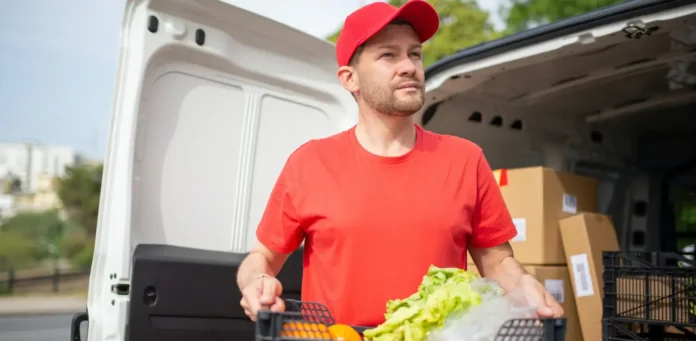
Looking ahead, several predictions can be made about the future of last-mile food delivery solutions:
- Increased automation ─ Automation will play a significant role in all aspects of last-mile delivery, from warehouse operations to delivery itself. Autonomous vehicles, drones, and delivery robots will become more prevalent, reducing reliance on human labor and increasing delivery efficiency.
- Sustainability focus ─ As environmental concerns grow, there will be a stronger emphasis on sustainable delivery practices. Electric vehicles, cargo bikes, and eco-friendly packaging will become standard, and companies will continue to innovate to reduce their carbon footprint.
- Enhanced customer experience ─ The integration of advanced technologies such as AI, ML, and IoT will lead to highly personalized and efficient delivery experiences. Real-time tracking, predictive delivery times, and seamless communication will become the norm, significantly enhancing customer satisfaction.
- New delivery models ─ The gig economy will continue to influence last-mile delivery, with more businesses adopting crowdshipping and flexible delivery models. Additionally, hybrid delivery systems combining traditional, autonomous, and crowdsourced methods will emerge to meet diverse customer needs.
- Regulatory changes ─ As new technologies are adopted, regulations will evolve to ensure safety and compliance. Governments will likely introduce new policies to manage the use of drones, autonomous vehicles, and other innovations, balancing innovation with public safety.
Conclusion
The landscape of last-mile food delivery is being transformed by innovations such as real-time tracking, sustainable practices, and emerging technologies like blockchain and IoT. Companies that stay ahead of these trends, like DeliveryDart, will be well-positioned to enhance customer satisfaction, operational efficiency, and sustainability.
As we look to the future, the continued adoption of these innovations will be crucial for businesses aiming to thrive in an increasingly competitive and environmentally conscious market.







